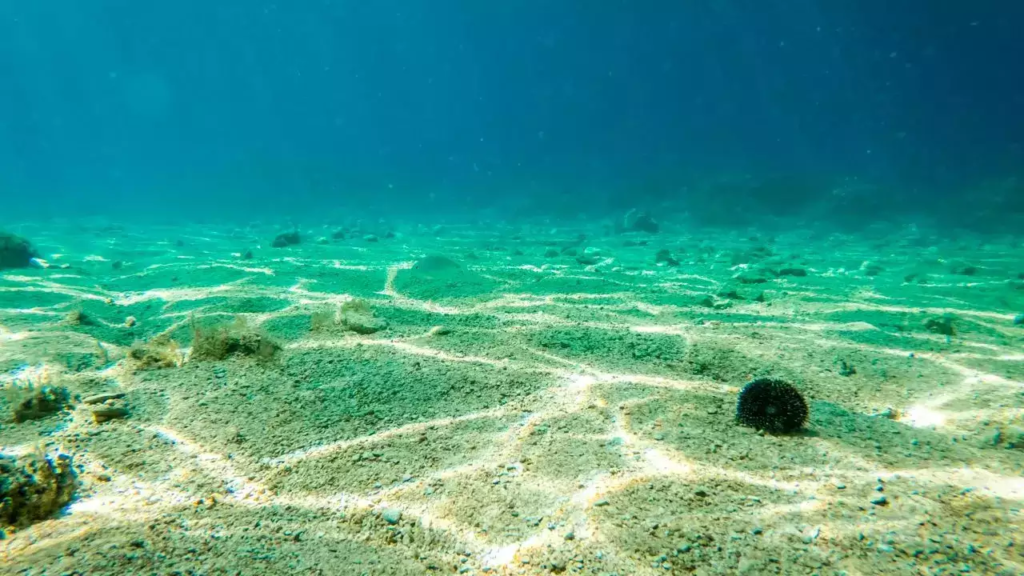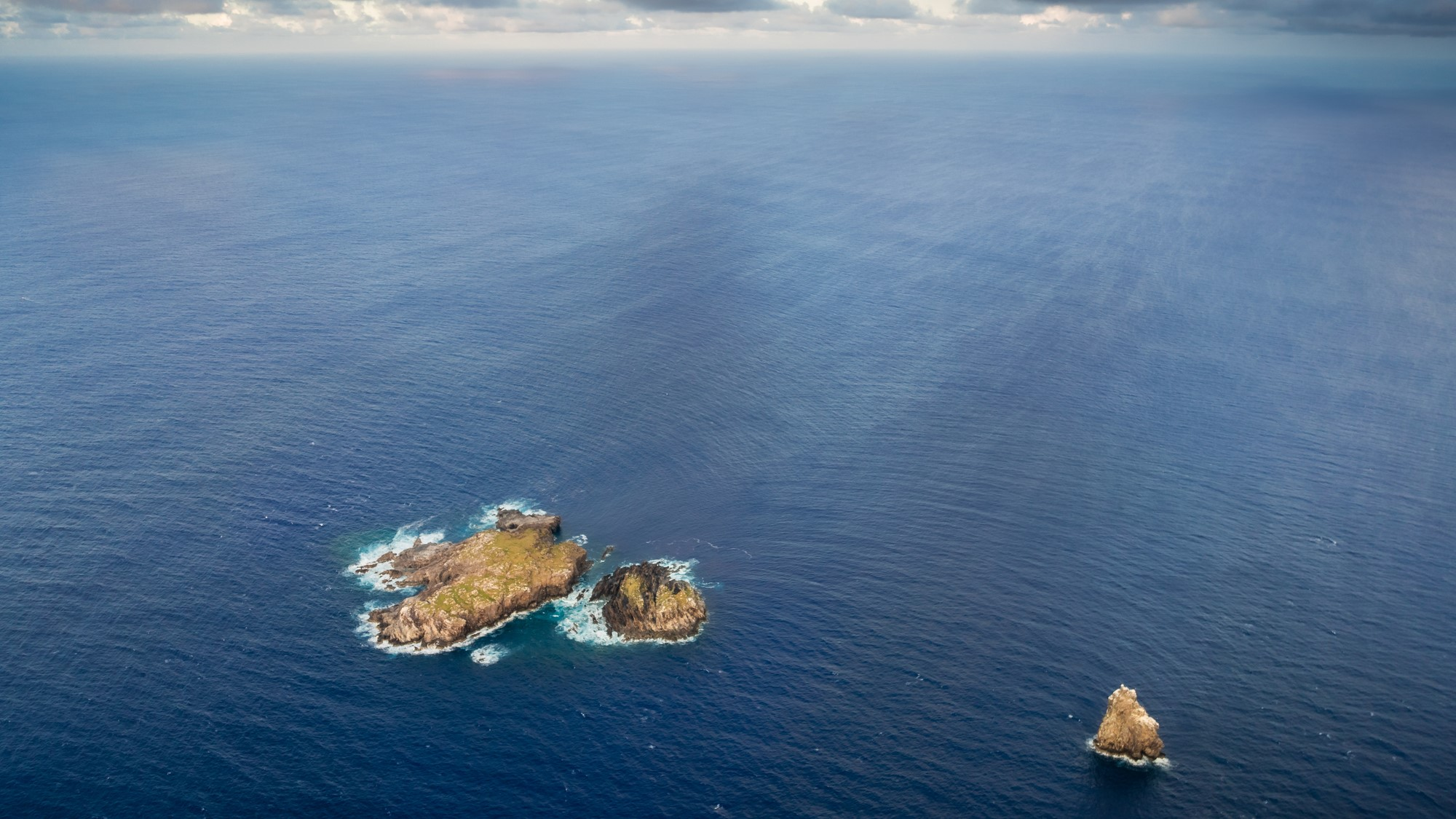The recent discovery of a chunk of seafloor hidden beneath the Pacific Ocean has excited scientists and opened up new possibilities for understanding Earth’s deep interior. This discovery offers a glimpse into the planet’s ancient history, particularly an era dating back to the dawn of the age of dinosaurs, approximately 250 million years ago.
A fossilized fingerprint of this chunk of seafloor was found, revealing far more unmarked territory in Earth’s mantle than scientists previously imagined. This could potentially lead to groundbreaking insights about the Earth’s past, its mantle, and how the planet’s structure has evolved over time.
The chunk of seafloor discovered by a team of seismologists was once part of the Earth’s crust and began sinking into the mantle millions of years ago.
Located beneath the East Pacific Rise, a mid-ocean ridge stretching 2,000 miles off the coast of South America, the team used seismic waves to map out and create a digital cross-section of the Earth’s crust and mantle.
Read : UK Cedes Sovereignty of Chagos Islands Back to Mauritius
What they found was a dense and thick mantle transition zone under the seafloor, which they describe as the fingerprint of an ancient piece of Earth’s seafloor, now fossilized within the mantle.
Ancient Structure Beneath the Mantle
The chunk of seafloor discovered is more than just a remnant of the Earth’s past; it represents a significant leap in our understanding of how the planet’s interior works.
Read : Mongolia: A Beautiful Landlocked Country in East Asia Was Once an Ocean
It all started when lead author Jingchuan Wang, a seismologist and postdoctoral associate at the University of Maryland, and his team decided to study the seismic activity beneath the East Pacific Rise.
Their goal was to better understand the structure of the Earth’s mantle, the middle layer that encases the planet’s core. What they stumbled upon was the thickened area that is now believed to be a slab of Earth’s crust that subducted into the mantle millions of years ago.
This chunk of seafloor was once part of the southeastern Pacific Ocean’s seafloor. Through the process of subduction, where one tectonic plate moves beneath another, this piece of the Earth’s crust descended deep into the planet’s interior.

The digital cross-sections created by the research team have allowed scientists to observe the fingerprint of this ancient seafloor slab. This is an exciting development, as it could help answer lingering questions about the mysterious gap in the lowermost sections of the mantle, a region that remains largely unexplored.
What the Discovery Tells Us
The discovery of this chunk of seafloor opens up several possibilities for researchers. Firstly, it offers an unprecedented look into Earth’s geological past. According to Wang, this fossilized piece of the Earth’s seafloor is unlike anything that has been studied before.
He explained that “it’s giving us a glimpse into Earth’s past that we’ve never had before.” This discovery could allow scientists to better understand the timeline of Earth’s history, particularly during the time of the dinosaurs when the tectonic plates were shifting and evolving.
This particular chunk of seafloor was subducted into the Earth roughly 250 million years ago, making it a unique relic from an ancient time. Scientists believe that further exploration into these ancient structures will continue to reveal new insights about the Earth’s mantle and its past.
The mantle transition zone, where this fossilized seafloor lies, is a key area of interest. This zone is where the Earth’s mantle changes from a solid to a more fluid-like state, and studying it could help scientists understand how the mantle operates and evolves over millions of years.
The Future of Deep Earth Exploration
The discovery of this chunk of seafloor is just the beginning. Wang and his team believe that there are many more ancient structures hidden beneath the Earth’s surface, waiting to be uncovered.
Each structure could potentially unlock new information about our planet’s formation, evolution, and even provide insights into how other planets in our solar system may have developed.
The study of these ancient seafloor slabs may also help researchers better understand the dynamics of tectonic plates and the subduction process that continues to shape the Earth’s surface today.
Moreover, the chunk of seafloor discovery could lead to advancements in understanding the mantle’s role in the Earth’s overall geological processes. The mantle, which wraps around the Earth’s core, plays a critical role in the planet’s tectonic activity, influencing everything from volcanic eruptions to earthquakes.
By studying ancient structures like this slab of seafloor, scientists may be able to answer questions that have long puzzled researchers, such as how the mantle flows and how it affects surface geology.
As Wang noted, “This is just the beginning. We believe that there are many more ancient structures waiting to be discovered in Earth’s deep interior.

Each one has the potential to reveal many new insights about our planet’s complex past – and even lead to a better understanding of other planets beyond ours.” The discovery of the chunk of seafloor beneath the Pacific Ocean is likely just the first of many that will reshape our understanding of Earth’s interior.
The finding of a chunk of seafloor hidden deep beneath the Pacific Ocean has opened a new chapter in the study of Earth’s mantle and its geological history.
This ancient slab of seafloor, which was subducted into the mantle approximately 250 million years ago, offers a fossilized fingerprint of a time long past, a time when dinosaurs roamed the Earth. Through advanced seismic techniques, researchers have been able to map this ancient structure and unlock new insights into how the Earth’s mantle operates.
As more discoveries like this chunk of seafloor are made, scientists will continue to deepen their understanding of the Earth’s past and the processes that shape our planet today.
With the potential to reveal much about Earth’s internal workings, the study of these ancient structures may also help us explore and understand planets beyond our own. The future of deep Earth exploration is filled with promise, and the discovery of this seafloor slab is just the first step toward uncovering the secrets of Earth’s mantle.

